As a General rule baby chicks can go outside when 1) Wings developed 2) Tail Tuft Forms 3) Mother takes them out 4) Enough feathers to keep them warm 5) Outside temperatures
- Wings Develop
- Tail Tuft Forms
- Enough Plumage to retain Heat
- Mother will take short field trips first
- How fast depends on Environment ( Heat – Cold – Predators – Feed Availability)
- Baby chicks need ambient 95F
When Can Baby Chickens go Outside
When can Baby Chicks go outside? Keeping brooders at optimal temperatures aids in the health of chicks. However, when are chicks permitted to venture outside? Hens will allow their offspring to spend more time outdoors as they grow older. First, wings develop and tail tufts form. Then chests begin to fill in. Babies eventually gain sufficient coverage that they no longer need to hide beneath wings to stay warm.
Check Out Amazon for Educational Resources for Breeding Chickens
Though they are not yet mature enough to live outside, several weeks of age, depending on the breed, brooder chicks can begin taking short “field trips” around weeks three and four. Caring for baby chicks becomes more enjoyable when you bring them outside to peck at grass and chase bugs. First, however, keep watching the weather, the outside temperature, and the chicks’ ages.
These field trips provide an opportunity for chicks to exercise and diversify their diets. Exposure to the elements at appropriate temperatures “hardens” and acclimates them, making the first night out less shocking. Additionally, it enables you to develop a bond with brooding chicks as they grow, resulting in a gentler, more human-friendly hen or rooster.
12 Ways to Make Money by Chicken Farming—Extensive Guidelines for Chicken Farmers
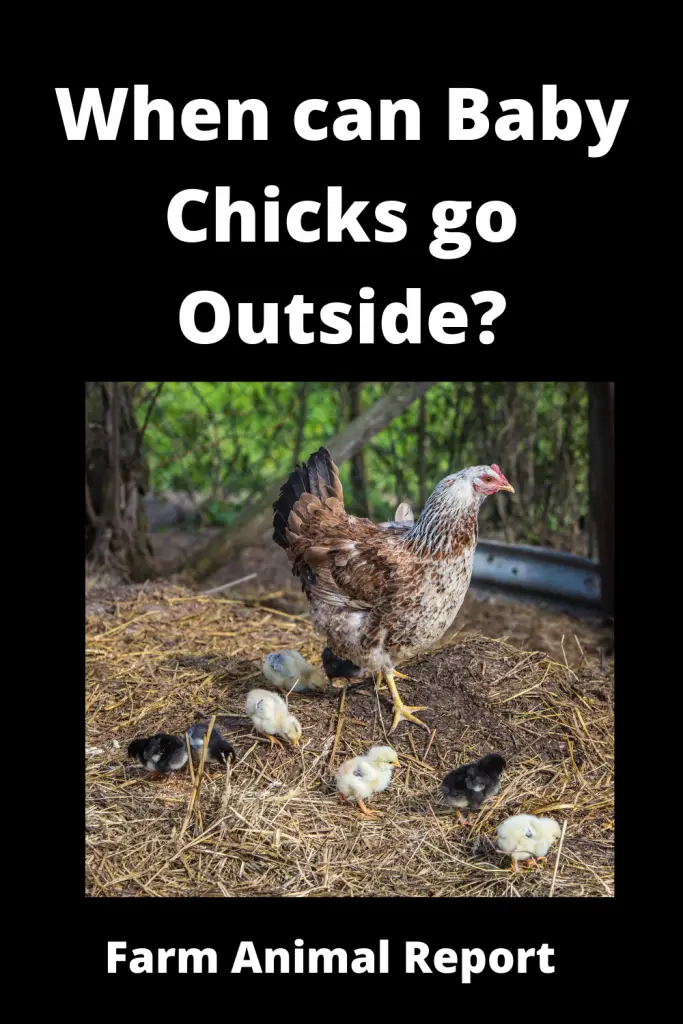
What Temperatures do Baby Chicks Need?
when can baby chickens go outside – By fluffing their feathers and forming air layers, chickens self-regulate their temperatures. But, even if the neck is still fluff-covered, brooder babies are not yet ready to sleep outside. several weeks of age.
Until then, follow the rule that newly hatched chicks require an ambient temperature of 95F; after that, reduce the temperature by five degrees each week. They can spend the entire day outdoors if the temperature remains within the appropriate range for their ages. However, keep in mind that wind and water will chill a chick if the temperature is warm enough. The larger the flock, the more chicks can huddle together for warmth, and you won’t have to rush them inside as quickly.
Outside “playpens” should be completely enclosed, with all openings too small to accommodate chicks.
Always cover the top of the enclosure, as birds this small are vulnerable to cats and other predators. Blue jays, too, have been known to enter topless enclosures and terrorize chicks. In addition, smaller wild birds may carry pathogens.
Give food and clean water and shade, and a place for the chicks to seek shelter. A shade/shelter can be as simple as a box on its side.
If it rains, or if you notice chicks huddling together rather than exploring their surroundings, bring them inside. Additionally, if their daytime “playpen” is unprotected from predators, get them inside whenever you cannot supervise.
Carry them out to the playpen and back in individually rather than hauling a pet carrier full of babies. This acclimates them to being handled and increases their trust. In addition, it teaches them that being grabbed by their human owners is not a cause for alarm.
Turn off the heat lamp as babies approach the six-week mark. Allow them to spend their days and nights in your home or garage. While the brooder will protect them from extreme weather, removing the heat lamp for the final week or two allows them to acclimate. Bear in mind that adding heat to outside coops is extremely dangerous! Gradually transitioning from a heated environment to an unheated but comfortable environment to outside and shelter is more accessible than going out in week six and braving the elements.
Baby Chicks Growth Stages / Raising Chickens
Incubation and Hatching
It makes no difference whether the chicken or the egg came first—every new fuzzy baby chick begins as an egg these days. Even before the mother hen lays her egg, the chicken embryo begins to develop. However, once the hen lays, this development ceases until the egg is placed in the appropriate environment, such as a broody hen or a safe incubator.
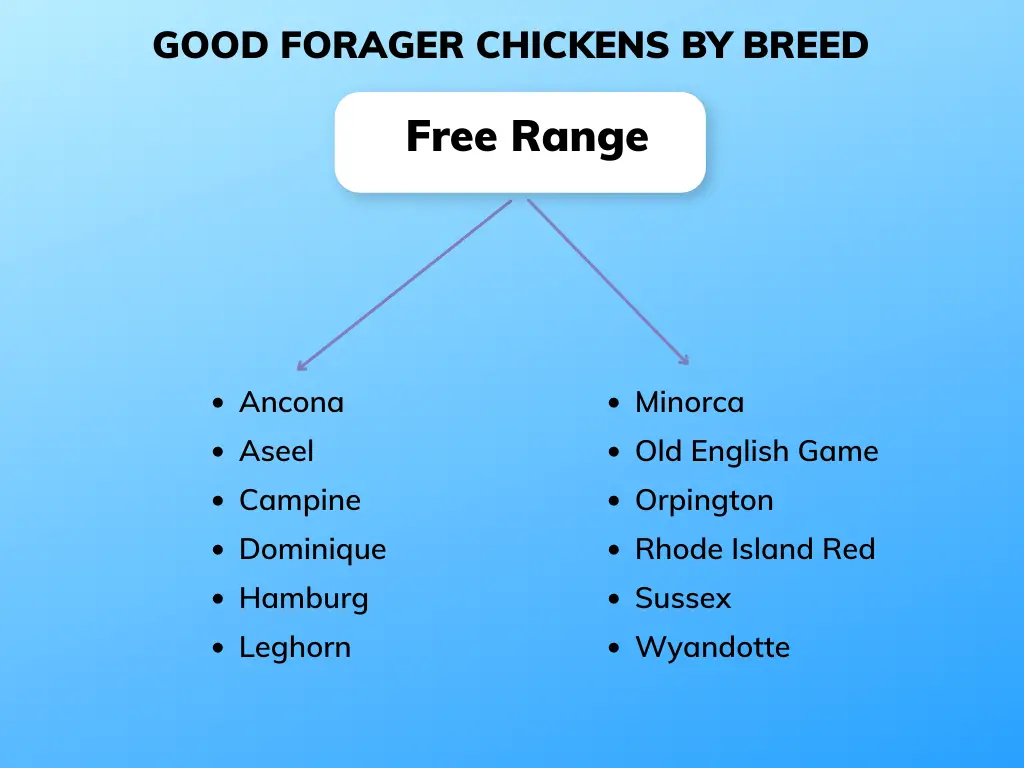
Following the start of incubation, the embryo spends the first few days developing its shape. While the head and backbone develop, the first stages of organ development occur. The source will have developed all of its vital organs and different parts by the fifth day of incubation. The embryo continues to grow over the next several days, becoming more recognizable as a developing chick. The wings and feet gain definition, feathers appear, and the beak hardens.
The embryo begins to move into position for hatching around the 14th day of incubation. The chick is ready to hatch after approximately 20 days of incubation. The baby chicken absorbs nutrients from the eggshell during this time to sustain itself during its first days of life. The chick’s incubation period ends when it begins pecking its shell open and stepping out into the world.
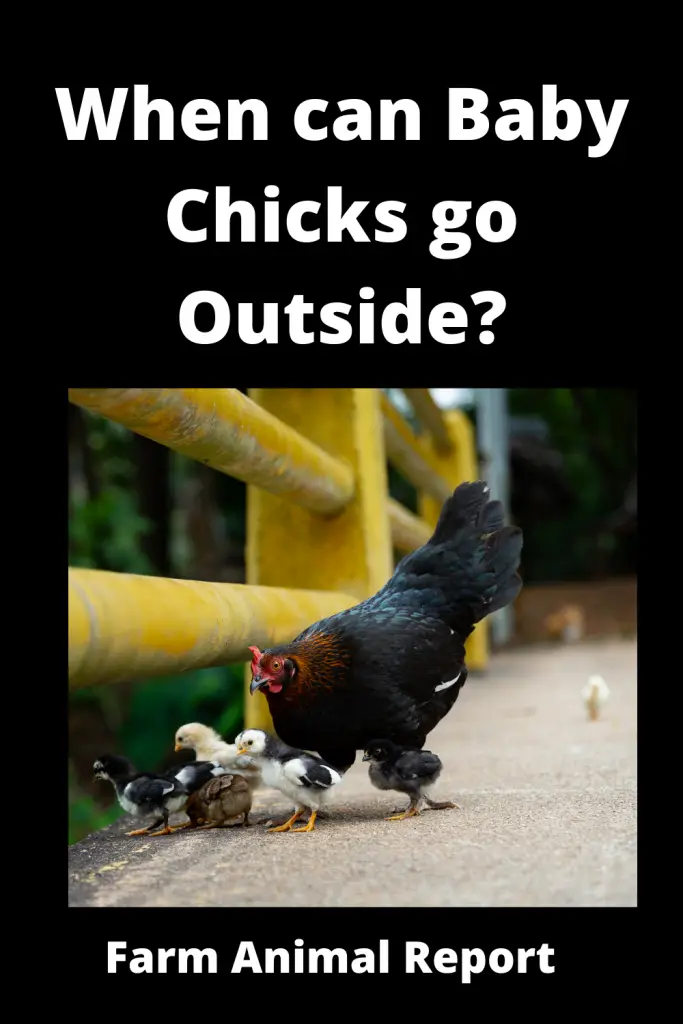
Baby Chicks – When Chicks Can go Outside
Your chick will emerge from the egg wet, weak, and exhausted, but this will not last long. If you choose to leave your newborn chicks with the mother hen, very little will require you. Provide a secure area for your hen to raise her brood and crumbs of starter feed for the chicks. Additionally, it would help if you established a clean water supply for your hen and her young.
If you do not have a hen to protect the chicks, a chicken brooder will provide them with the warmth and security they require during their first weeks. Because chicks cannot generate body heat in the same way that adult chickens do, a source of heat is required. For the first week, set the brooder to 95 degrees Fahrenheit.
Then, reduce this temperature gradually each week until your chicks have adapted to ambient temperatures. Additionally, your brooder requires a clean supply of food and water. Because chicks are clumsy and messy, you may need to check in on them multiple times a day to ensure their environment remains clean. This is another critical step, as chicks are more susceptible to diseases like coccidiosis. Finally, ensure that the brooder remains dry. Proper ventilation and new bedding will help prevent mold, mildew, and other potentially dangerous moisture issues.
During the early weeks, you will notice the chicks growing and beginning to shed their fuzzy chick down in favor of feathers. After a week, you can start acclimating your chicks to everyday coop life by providing them with a small perch in their brooder. Additionally, you can supplement their feed with chick grit. Finally, ensure that your chicks continue to receive adequate protein, amino acids, and other critical nutrients for healthy growth and development.
Pullets
Adolescence follows the endearing chick stage. Between weeks five and eighteen, a chicken’s adolescent years occur. Your young birds will undergo numerous visible changes during this time. A pullet, a young hen, is frequently defined by its skinny legs and awkward proportions. Never fear, as your adolescent chicken will continue to grow as new primary feathers develop.
This is also the stage at which chickens begin to experiment with their pecking order. If you have an adolescent chicken brood, they will establish a pecking order. By introducing them to the rest of the flock, you can avoid them having to endure this ordeal twice, once among themselves and again with the entire flock.
Once your pullets reach approximately two-thirds the size of adults, you can combine the two groups. Be on the lookout for excessive bullying. If you have cockerels, adolescent males make certain they are introduced to the flock before they begin crowing. This will prevent fighting, mainly if your flock already includes another rooster.
So during this time, you should continue to feed your adolescents starter feed. Teenage chickens, like chicks, require a high protein diet. Take care, however, not to overdose them on calcium, as this can impair their development.
Adult Hens
When your young birds reach their eighteenth week of life, they can be considered adults. This is the time to transition them to regular feed or a specialized layer feed to assist your hens in producing more vital eggs. In addition, your female chicks will mature into adults capable of laying their eggs during this time. While minor quarrels within the flock are possible, your new adults will quickly settle into their routine at this point.
Once your chickens reach maturity, their first year will be pretty typical. Your new hens will regularly lay until they reach the age of about 18 months, at which point they will undergo their first molt. Your hens will cease laying during molting as they shed and regrow their feathers and replenish their nutrient reserves. Following their initial molting, your hens will molt once a year, beginning in the fall as the days grow shorter.
What Baby Chickens are Called?
The term “chicks” is most frequently used to refer to baby chickens. However, this is a non-specific term that refers to both male and female chickens. Because sexing a chicken at birth can be challenging, having a catch-all gender-neutral time for the baby birds makes sense.
Informally, chicks are occasionally referred to as “peeps.” This term is most frequently used to refer to newly hatched chicks during the period between hatching and being moved to a brooder. They earn this moniker due to the gentle chirping or “peeping” sound they make while in the incubator. When you hear that noise, you will know that you have successfully hatched a chick.
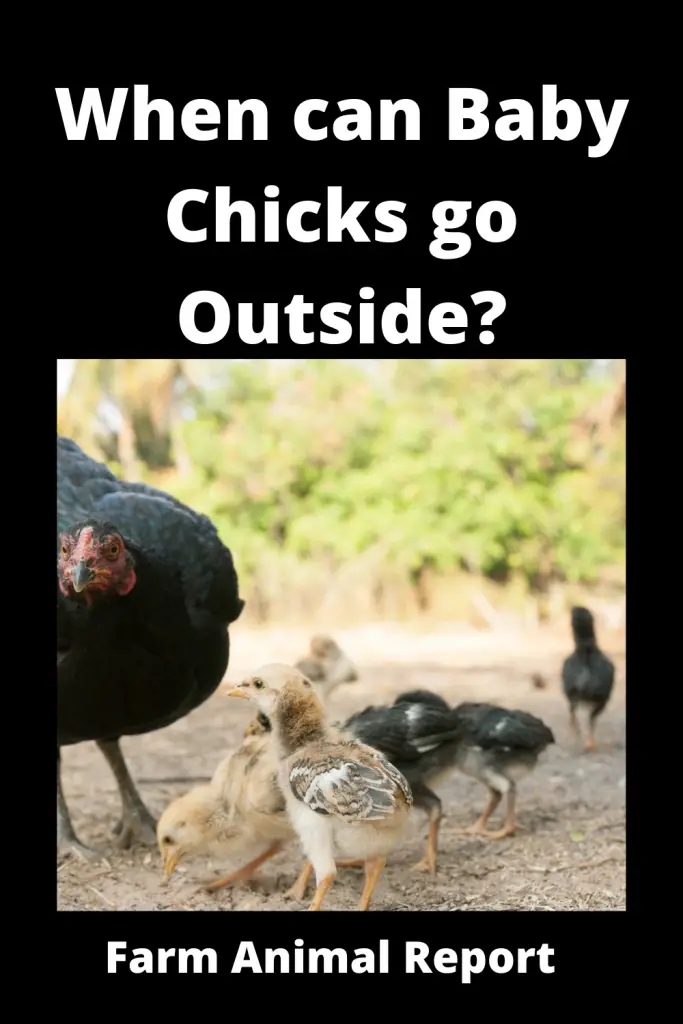
Do Baby Chickens Need Light at Night?
Light impacts the rate of growth of chicks, and insufficient light has consequences when raising a flock. Bright lighting is unnecessary when raising chicks; in fact, it may promote cannibalism and toe pecking. While baby chicks do not require light at night, they do require warmth. Therefore, keepers frequently employ a combined source of light and heat, ensuring that they receive both 24 hours a day.
Can you Bathe Baby Chicks?
Chickens are not pets, and bathing a chick may seem absurd. Indeed, many chicks will never require bathing, and as they mature, they will shed dirty feathers naturally during their seasonal molts. Chickens will also dust, bathe and preen daily, ensuring that their feathers remain in good condition.
However, there are times when a chick will require cleaning, such as when it is pooped on by another chicken or becomes particularly clumsy and dirty. Cleaning chicks regularly is an essential part of proper chicken care, as it helps minimize bacteria and insect infestations that can cause illness. Additionally, a clean chick makes a better impression if it is to be shown or sold.
Tips for Chick Cleaning
Chick cleaning is not the same as bathing a pet, and special consideration must always be given to keeping the bird warm, comfortable, and at ease.
- Bathe the chick only on warm, sunny days with a gentle breeze to ensure the bird dries quickly. A wet chick becomes rapidly chilled and susceptible to infection. Needs a heat source.
- Bathe only the dirty part of a chick. Minimal bathing also reduces stress and protects the bird’s natural body oils, which help maintain the bird’s feathers in top condition.
- Bathe a chick in lukewarm water, ensuring that the water is neither too hot nor too cold. Extreme temperatures will stress the bird and may result in skin injuries.
- When wetting the area to be cleaned for the first time, gently but securely hold the bird. This is the time when the chick will flap and struggle, increasing the likelihood of injury.
- Thoroughly soak the dirty area to dislodge dried-on dirt, feces, and other muck. While using only water may be sufficient to clean the feathers with mild baby shampoo.
- If necessary, use a well-worn, soft bristle toothbrush to gently rub feathers, legs, and feet, taking care not to break delicate feather shafts.
- Rinse the chick thoroughly in warm, clear water until all soap residue is removed. Proper rinsing will also remove any remaining dirt, sand, or feces particles. Wrap the bird tightly in a soft towel or clean rag to absorb the maximum amount of water possible. However, avoid rubbing the feathers, as this may result in excessive breakage.
- Finish drying the chick’s plumage with a hairdryer set to the lowest heat setting. Never use a setting that is too high, as this can quickly overheat chicks and result in burns.
- Sterilize all tools, basins, and surfaces used during the bath, and thoroughly wash your hands with an antibacterial soap to avoid contamination. use an appropriate heat source.
Can you Handle Baby Chicks?
It is perfectly acceptable to hold baby chicks from the moment they emerge from the incubator dry and fluffy. The best way to hold a babe is to encircle its body with your hand, loosely wrapping your fingers and thumb around it and allowing the head to peek out.
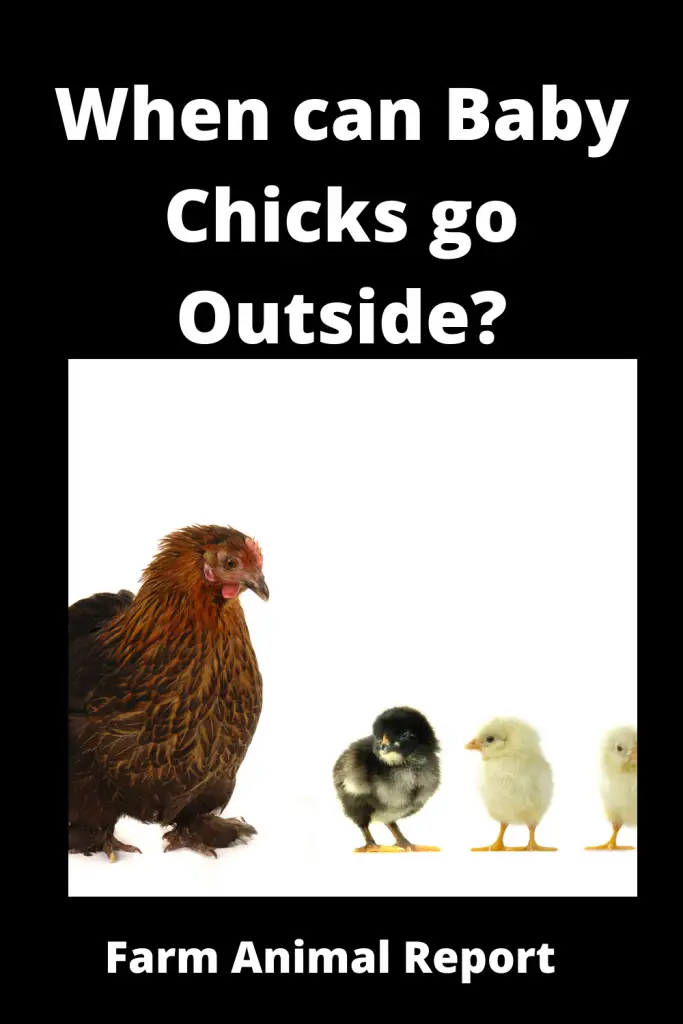
12 Baby Chickens Health Problems – Signs of Distress
1. Aspergillosis
Respiratory symptoms are the primary manifestations of this illness. If chicks become too hot, they will seek refuge as far away from the source of heat as possible and may pant with their mouths open. Conversely, if chicks are very cold, they may huddle under the heat source, peep in distress, and mound on top of one another in an attempt to maintain a sufficient level of warmth.
2. Chicks Suddenly Falling over Asleep
Sudden tiredness is quite common in baby chicks and puppies, kittens, and other infants. However, it can be pretty shocking when they suddenly collapse or when you see them lying on their backs with legs in the air.
3. Coccidiosis
This is a typical chicken illness that affects young chicks and can manifest itself in various ways, including loose droppings.
4. Crossed beak.
Baby chicks occasionally develop crossed beaks, in which the top and bottom beaks do not meet correctly.
5. Curly toes
Paralysis/partial paralysis, ataxia are all possible neurological symptoms of this chicken illness.
6. Encephalomalacia
This vitamin deficiency can manifest itself in various ways, including loss of balance, circling, head shaking or tremors, and eventually convulsions and paralysis.
7. Lump on your Chick’s Chest
Generally, there is nothing to fear about in this situation but learn when you should take action. Marek’s Disease
8. Paralysis/partial paralysis
(particularly of the legs), ataxia, and blindness are all possible symptoms of this illness.
9. Omphalitis
This illness manifests itself in a variety of different ways, including lethargy and loose stools.
10. Salmonella
Please keep in mind that your chicks do not have to be sick to transmit salmonella to you; salmonella is present in the feces of all animals, including humans and baby chicks. You could become ill if you handle chicks walking around in the poopy litter and do not wash your hands before bringing them to your mouth. Read about Salmonella infection and how to practice proper biosecurity.
11. Spraddle leg
If your chick appears to be unable to stand, he or she may have a spraddle leg. But, again, if detected early, this is a simple issue to address at home.
12. Unhealed Navel or Umbilicus
Contrary to popular belief, do not confuse an unhealed navel or a drying umbilical cord with a pasted vent.
How to Stop Baby Chick’s Cannibalism?
Cannibalism occurs most frequently when birds are stressed as a result of poor management practices. When a bird becomes stressed, it begins picking at another bird’s feathers, comb, toes, or vent. Once a bird’s open wound or blood is visible, the vicious habit of cannibalism can quickly spread throughout the flock. Cannibalism can be contained if caught early enough. However, if the problem is allowed to spiral out of control, the consequences can be severe. Cannibalism diminishes the value of the bird by causing torn and damaged flesh, poor feathering, and high mortality rates. Once this habit becomes entrenched, it isn’t easy to break.
Preventive Measures
- Allow birds to burn off excess energy in an enclosed outdoor run. This keeps the birds occupied and enables them to peck greens, the ground, and insects rather than other birds.
- Each day, give the birds a large handful of fresh greens such as clover grass or weeds. This significantly increases the fiber content of the birds’ diet. A high-fiber diet will keep the birds’ gizzards full and happy. Small pieces of baled green leafy hay will also provide something for the birds to nibble on.
- It is recommended to use mechanical devices such as plastic peepers or blinders on aggressive birds such as game birds.
- Placing brightly colored or shiny objects for birds to pick and occupy their time can divert their attention away from competing birds. A toy can be made by suspending shine cans just above eye level.
- Finally, in problematic flocks, beak trimming is used. Trim the beak by removing approximately 1/3 of the beak’s tip to create a square tip. This makes it difficult for birds to attack one another. However, beak trimming should be performed by someone knowledgeable about proper trimming techniques.
Treatment for a Cannibalism
Because various factors can cause cannibalism, you may be incapable of pinpointing the exact cause of the problem. However, stress, regardless of its severity, is frequently the primary factor.
- Attempt to correct any practices that may have contributed to cannibalism.
- Using red bulbs to darken the facilities.
- Remove any birds that have been seriously injured.
- Applying an “anti-peck” ointment to any injured birds usually results in their cessation of pecking.
- Reduce the temperature of the pen slightly if possible.
- Watch for signs of distress
Take no chances! Include cannibalism prevention in your management program, and you will save significant time and money.
Final Thought
Coccidiosis is more prevalent when baby chicks, depending on the breed, spend time outside due to the possibility of protozoa being spread by wild birds. Coccidiosis, on the other hand, is easily treated with medicated chick feed and probiotics. If you notice pink, meaty, or bloody stools, pause your field trips for a few days and treat the infants. Wild birds also carry respiratory diseases, some of which are highly contagious.
While infectious bronchitis is a virus that cannot be cured with antibiotics, keeping infants sheltered and warm during illness alleviates stress and reduces the risk of secondary infections. When are sick chicks allowed to go outside? Once they have ceased to exhibit symptoms, particularly if you have other chickens, they may infect.
Whether chicks are outside or inside, always provide clean bedding, food, and water to minimize stress and infection risk. Observe their behavior: do they huddle together to stay warm, are they sluggish, or do they happily flap around and peck at the ground? That joyful flapping and pecking are the best indicators that your babies are healthy and warm enough.





